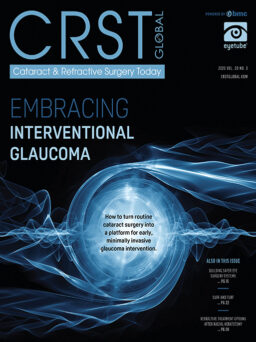1. What is the mission of the ICO?
The mission of the ICO is to improve ophthalmic education
worldwide and enhance care for patients with
visual disorders throughout the world. To achieve this,
we have worked with our member societies, paying particular
attention to improving ophthalmic education in
developing countries.
The ICO has developed a variety of initiatives that give opportunities to ophthalmologists in developing countries that they would not otherwise have. For example, we have provided more than 370 fellowships to young ophthalmologists in developing countries. We also provide an annual examination program at various locations throughout the world for young ophthalmologists to measure their knowledge in comparison with others. The ICO provided courses for more than 600 residency program directors at 13 sites (from Beijing to Bogota to Cairo to Ankara) on educational theory and practice to prepare them to train residents locally. We created a leadership- development program dedicated to ophthalmologists in Sub-Saharan Africa that focuses on enhancing ophthalmic education, practice, and leadership training for younger ophthalmologists in this region. The group is now forming its own organization to support one another.
The ICO is supporting the development of regional ophthalmic training centers in Nigeria (Regional Catholic Mission Hospital network coordinated with University Eye Hospital, Ibadan, and supported by the Lavelle Fund), China (Peking University Eli Lilly Diabetic Eye Disease Center), and Slovenia (ophthalmology subspecialist training at University Eye Hospital, Ljubljana).
One of our largest and longest-running programs is the WOC. We have increased the frequency of the WOC to every 2 years and look forward to hosting thousands of ophthalmologists from all over the globe in Berlin in June. More than 13,000 participants attended the WOC in Hong Kong in 2008, our largest turnout to date. WOC 2012 will be held in Abu Dhabi and WOC 2014 in Tokyo.
The ICO also has programs to address standards, ethics, advocacy, medical student education, e-learning, continuing medical education, uncorrected refractive error, and many other issues.
2. How has working in developing countries and with
ophthalmologists around the world informed your
approach to teaching?
Working in developing countries has focused our
attention on the great needs of ophthalmologists in
these countries and the great challenge to improve ophthalmic
education in theses regions. Knowledge of conditions
in developing countries shows us how fortunate
developed countries are in their training
and practice.
3. How have the rapid advances in
technology in the past decade changed
the way you conduct educational seminars
and programs?
There is now a greater tendency for
hands-on courses that teach new technologies.
Technology has also encouraged
us to evaluate the educational
process beyond the time spent in a lecture
hall. We are particularly interested in
furthering the use of new technology to more effectively
and economically reach ophthalmologists in developing
countries who may not have the funds to travel to congresses
and meetings.
4. What has been the toughest decision that you have
had to make as a leader of an ophthalmic society?
As the first Chief Executive Officer of the American
Academy of Ophthalmology (1976–1992), I faced many
challenges, but none nearly as tough as the ICO's challenge
of providing for the needs of ophthalmologists in
developing countries. Working with world ophthalmologists
to systematically address the millions of people who
have preventable or treatable visual loss is the toughest
situation I have faced.
5. What is your most memorable international
experience?
I have many, but one that remains with me is being
protected by machine guns while touring ophthalmology
programs in Nigeria with ICO leaders. We were there to
address that country's need for educational materials,
equipment, electricity, facilities, and subspecialists for
training. My tour of the educational programs throughout
Nigeria helped me to understand the depth of need
and the challenges that exist in responding to it.




